Author: Wang Xuan
These two days are really full of dramas. On April 20th, BMW released its brand-new 7 Series, while on the evening of April 19th, Mercedes-Benz and Audi held the release conference of their electric vehicle (concept cars) at the same time. It seems like a fierce competition, but in fact, some people, like Audi, are not worried at all.
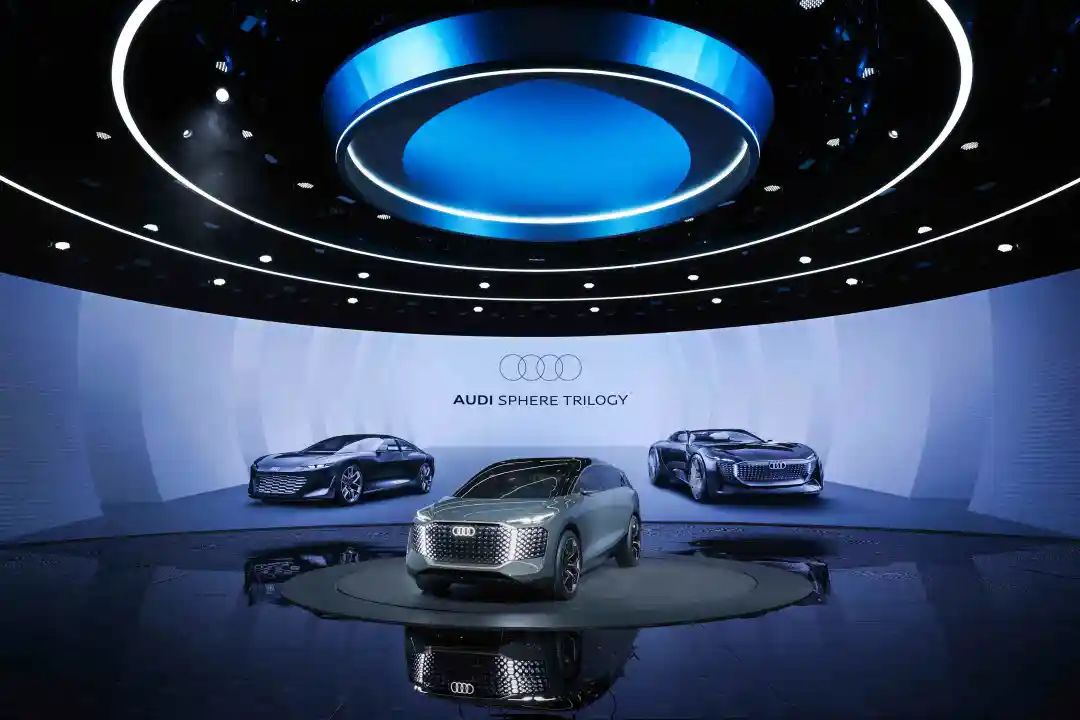
You may notice that BMW and Mercedes-Benz have already been fully invested in electrification. After the discontinuation of the early versions of i3 and i8, iX3 became BMW’s first product to unveil its brand-new electrification strategy, followed by iX and i4, both of which grasp the luxurious and sporty features. What? You still prefer the 3 Series? Alright, not too long ago, BMW’s brand-new i3 also met with Chinese consumers through localization.
As for Mercedes-Benz, it showcased multiple pure electric models at the 2021 Munich Auto Show. Then, new EQS, EQA, EQB, EQXX, and EQS SUV were released one after another, which made people feel overwhelmed.
Now, it seems that Audi’s e-tron and e-tron GT have been around for some time. After all, the summer of 2018, which was fueled by the Avengers, has never left us. In addition to these models, Audi also has Q2 e-tron, which was launched in 2019. The latest product is the customized Chinese version of Q5 e-tron for SAIC Audi, and Q4 e-tron, which is about to land in the Chinese market.
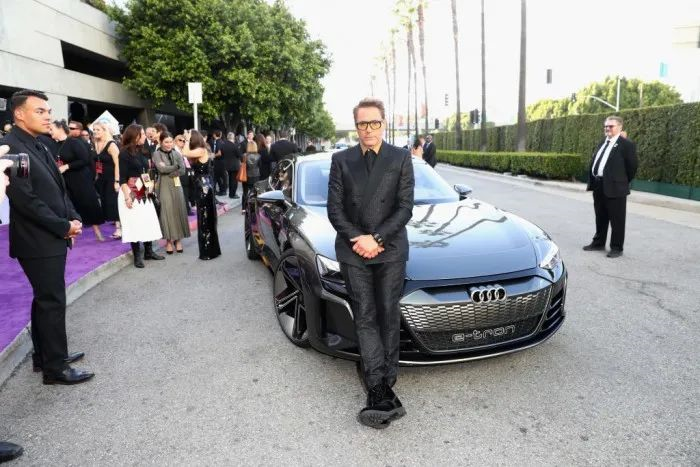
To be honest, in the past year, Audi has told us more stories about three concept cars: grandsphere, skysphere, and urbansphere, rather than the produced pure electric models. What is Audi really up to?
Even if it’s invested, it should be done in a reasonable way
Obviously, Audi seems not to be in a hurry about electrification because when we rationally analyze the market share of BBA’s pure electric models, we will find that there is no need to rush at all.
Developing new cars requires costs. Everyone is not a passionate youngster who generates electricity with love. Which of BBA is not an experienced veteran in the car industry? Let’s make things clear about the accounts and have a good think about it. Sometimes, it’s not a good thing to be too hasty.In fact, despite having both product strength and brand influence, the pure electric models of traditional luxury brands are still not selling well. According to data from Carsalesbase, after five months of sales in China, the monthly sales of Mercedes’ EQA and EQB models are still only a few hundred, with no data for the EQS, but I believe everyone has a certain expectation for the market performance of this model.
Among them, the BMW iX3 is a leader on the sales chart, with a monthly sales average of around 2,000. In Europe and the United States, Tesla is on the sales chart, while in China, besides Tesla, there are also new players. You might think that the sales of luxury brand models should be lower than the cost-effective products like the Tesla Model 3 and the XPeng P7. The market law is indeed like this, but what does it mean if they cannot sell more than NIO? In this round of competition between new stories and traditional forces, consumers may prefer to hear some fresher ideas.
In terms of the current market share of luxury brands, Audi’s large-scale deployment of pure electric products this year may be no different from re-entering the market in two years. Of course, we will not lose to Mercedes and BMW in brand influence just because it moves too slowly. The three pure electric concept cars are both “cake” and new stories and imagination.
Are those who say they will launch more than ten electric vehicles by 2030 losers?
As the saying goes, “rich people rely on technology, poor people rely on mutation”. Having both technology and mutation is Tom・Holland brother, and perhaps also tomorrow’s Audi.
Traditional luxury brands never lack technology. Why is Audi not in a hurry? Because they have PPE luxury pure electric platform in their hands, and the urbansphere concept car that was unveiled yesterday was born on the PPE platform.
From this car, we can easily get some information about the PPE platform. First of all, the battery module capacity of the Audi urbansphere is as high as 120 kWh. The platform adopts 800V voltage technology, and urbansphere can achieve 270 kW charging power on this, which can increase the range by more than 300 kilometers with just ten minutes of charging. The battery can be charged from 5% to 80% in just 25 minutes.In terms of performance, the total output power of the two motors of the Audi urbansphere concept car is 295 kW, and the torque can reach 690 N·m. At the same time, the model is also equipped with an electric quattro four-wheel drive system: One motor is equipped on both the front and rear axles, which can achieve four-wheel drive when necessary through electronic control. However, the upper limit of the Audi PPE platform can reach a maximum output power of 350 kW and a torque of 800 N·m.
Meanwhile, Audi urbansphere presents a surprisingly large layout with a total length of 5.51 meters, width of 2.01 meters, height of 1.78 meters, and a wheelbase of 3.4 meters. Although it is a four-seater layout, it has already entered the full-size SUV category in terms of space and size.
However, Audi urbansphere may be the limit of the Audi PPE platform. According to Oliver Hoffmann, head of the Audi technical department, at the UBS investor meeting on July 7, 2021. 800V will be the core technology of the platform, and the platform development size range is 2,890-3,080mm, which can support the development of B to D-class cars, and the ground clearance range is 1,641-1,714mm, which can support the development of sedans and SUVs.
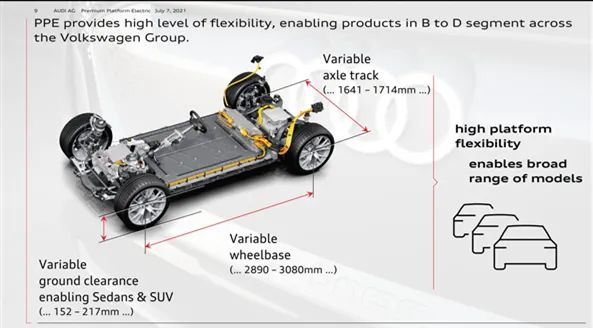
In terms of this strategic technology layout of the pure electric platform, Audi is definitely at the forefront of the industry. The PPE platform covers mid-to-high-end models, covering Audi’s mainstream audience, and has introduced Volkswagen’s MEB platform. On this platform, Audi has developed the Q4 e-tron model, as well as the J1 platform with a performance orientation, which has the Audi e-tron GT and Porsche Taycan models.
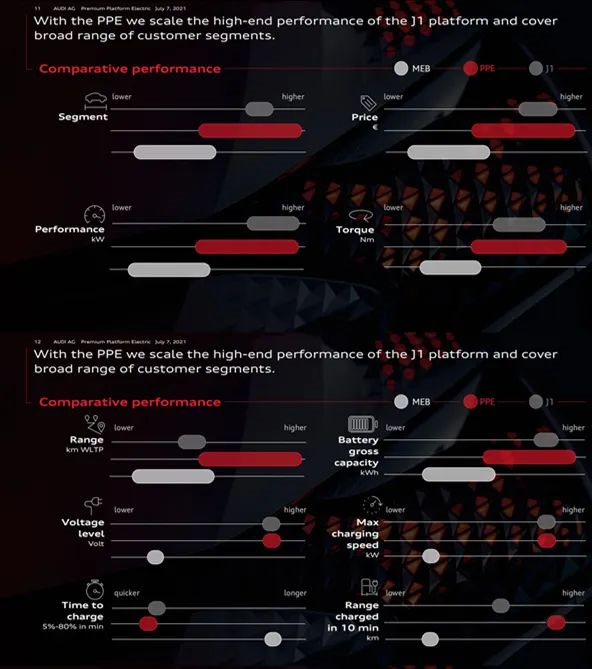
As shown in the above figure, it is a multidimensional comparison chart of the three platforms used by Audi, covering all the sub-segments markets we can think of.
At yesterday’s press conference, Audi also announced the “Audi China Strategy 2030”, which mentioned deepening cooperation with FAW Group to deepen the product spectrum for sales in China. At the same time, looking back at the strategy that Audi announced to the outside world in 2021, there was a more core event mentioned, that Audi will start to release new cars to the outside world with pure electric models from 2026, and all new cars will be pure electric vehicles until 2033 when the production of internal combustion engines will stop.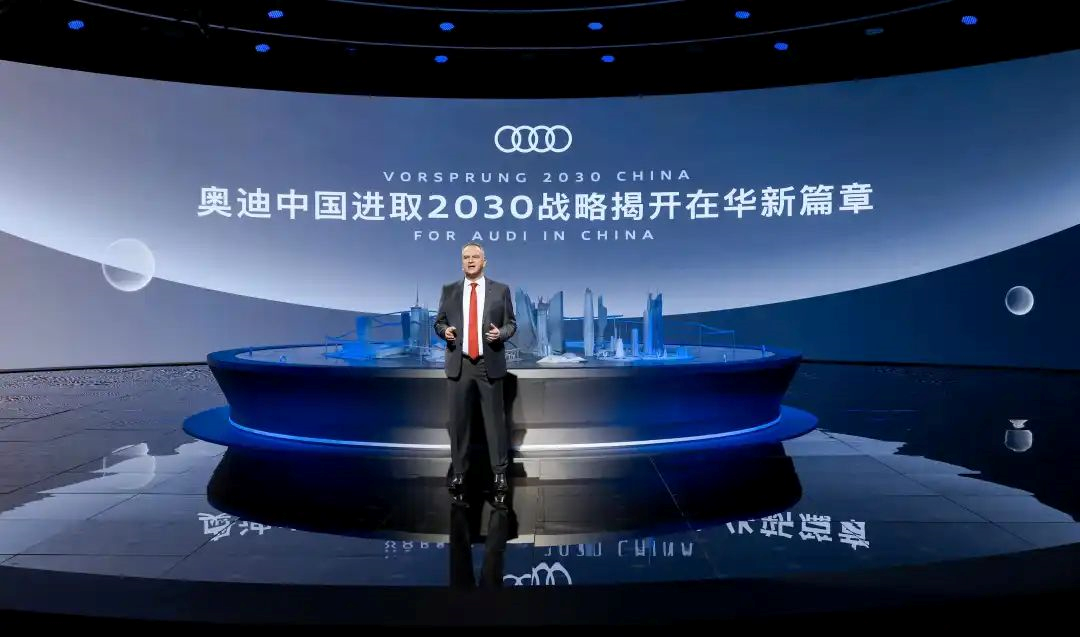
Since the trend of electrification has deeply entered the automotive industry, we have become accustomed to such strategies. To demonstrate its determination, Toyota even unveiled 30 electric car models. However, most people doubt whether traditional car manufacturers can quickly complete their electric product lines. For example, for Ideal cars, they only launched two models in five years, while traditional car manufacturers can launch several or even more than a dozen with a single wave of their hands.
In fact, the key issue lies in systematic capacity. Just like the three platforms already laid out by Audi, the concepts of platformization and modularization emerged in the 1970s. And the reason why they have been used till now is that they can shorten the R&D cycle of new car models and improve efficiency.
Traditional car manufacturers face far more problems than new forces. In the era of intelligence, the core problem faced by international car manufacturers is localization. Because different regions have different customer preferences, product characteristics and functional tendencies can be vastly different. Therefore, before officially entering the electric revolution, laying a good strategic foundation is essential to better face challenges. Sometimes being in a hurry can disrupt the rhythm of product launches.
On the urbansphere, Audi learned about “co-creation.” Next, let’s talk about “mutation,” which can be understood as new rules of the game in the automotive industry. New car manufacturers tell a lot of new stories in the market to quickly gain a foothold among users. The most widespread among them is “user co-creation.” Today, Chinese consumers are no longer “car blindness” like 20 years ago. As the largest car market in the world and the fastest-changing car market in the world, they have already had enough say in products.
Therefore, Audi’s new urbansphere concept car has two labels: led by the Chinese team and created by user co-creation.
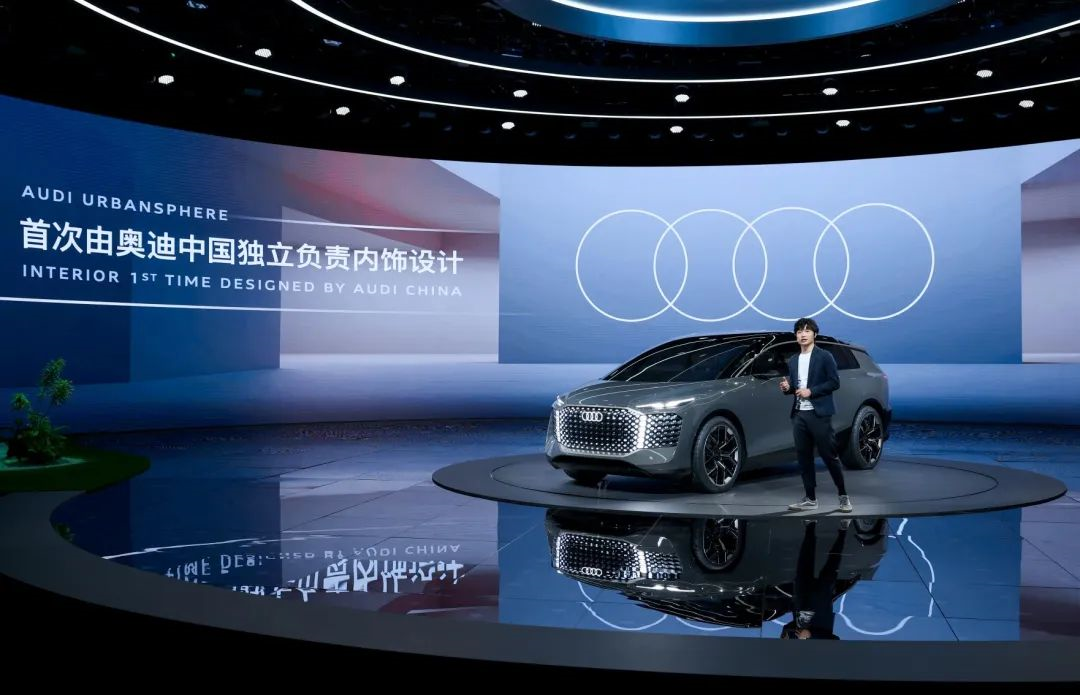
The interior design team of urbansphere comes from Audi China Design Center in Beijing’s 798.
At the press conference, designer Stephan Fahr-Becker mentioned that in-depth communication with Chinese customers allowed Audi to observe that Chinese consumers’ perspective on future high-end travel has changed. They expect high-quality luxury travel experience, which requires spaciousness. The traditional configuration of trying to fit in more seats, storage space, and functional elements can no longer meet their expectations. On the contrary, they hope to have a spacious area and a comfortable experience as a unique characteristic. Because, in addition to physical space, they are also looking for a spiritual space to slow down their pace in busy urban life.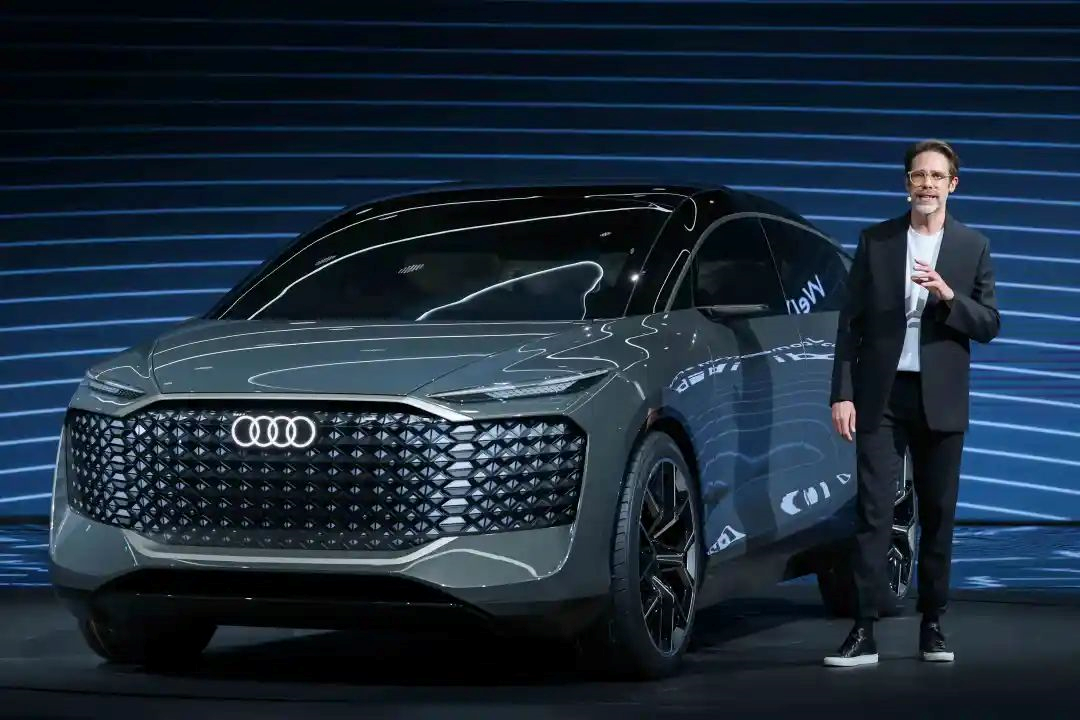
White Space, Connectivity, and Third Space
Many people are curious about the purpose of Audi’s three concept cars, which were among the first to be released in the era of electrification. In fact, the naming of the “sphere” models, Audi’s Skysphere, Grandsphere, and Urbansphere, reveals that the focus is on the interior space of the cars. The basis of vehicle design and technology has shifted to the interior space, which is the space where passengers live and experience during their journeys.
We are now at a crossroads in the automotive industry revolution. Before this, we chose electrification over internal combustion engines, and we chose chemical-material batteries over fuel cell technology. We have also steadfastly reformed the entire electronic and electrical architecture of the vehicle. Those who have done the best in each transformation have become leaders in the industry, such as Tesla.
The challenge we face now is the transformation of the cabin space, which is perhaps why Audi has been continually exploring the possibilities of the cabin at this stage. There are three key points that I have observed on the Audi Urbansphere: white space, connectivity, and third space.
White Space
The concept of white space is easy to understand and has been a fundamental aspect of car design since the very beginning. In the early days, we could understand white space as storage space in the interior of the vehicle. Apart from seating, users always need some space to put things, so designers placed storage compartments on the door panels and cup holders in front of the central armrest, and so on.
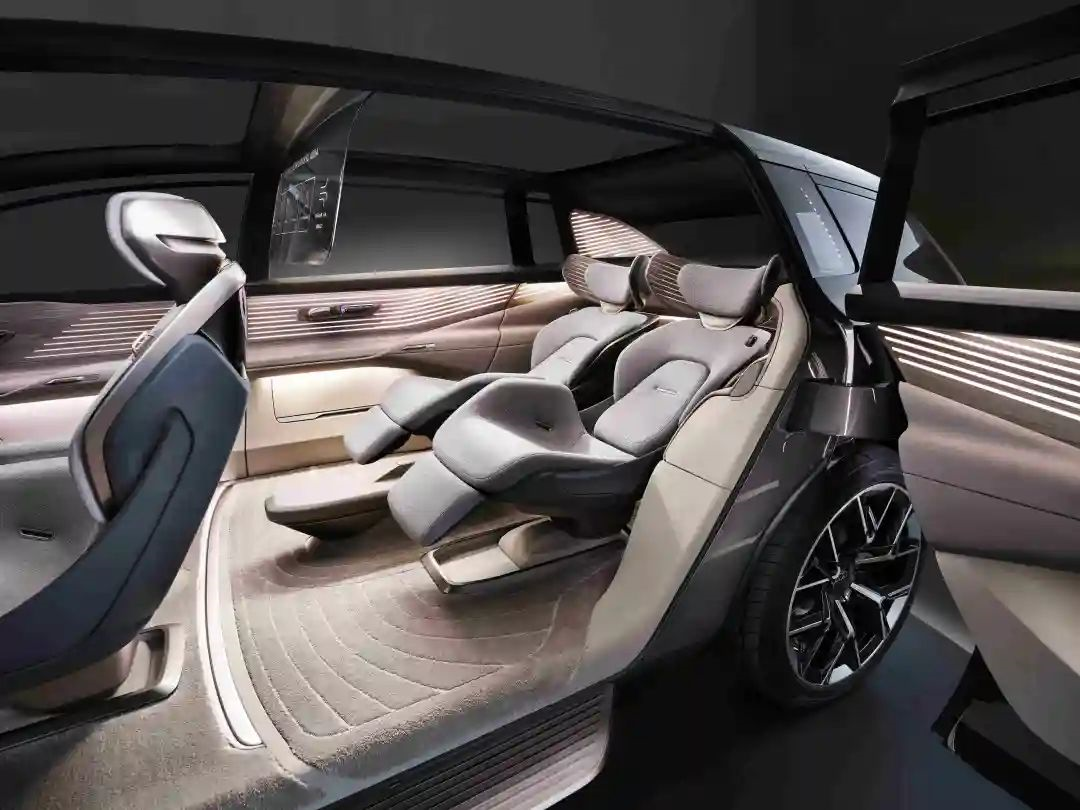
Storage space is a product of personalized demand, and a blank space can be disposed of as you wish. On the Audi Urbansphere, the designers have taken the space to the extreme, while also providing users with more intelligent “white space” in the era of electrification.
“The decisive factor in making electric mobility more attractive is our design approach, which starts from the holistic view and the customer’s needs,” says Markus Duesmann, CEO of Audi AG. “What is crucial is no longer just the product itself, but the entire ecosystem, which is more important than ever before.” Therefore, Audi is actively building a full-service digital ecosystem for the entire vehicle.
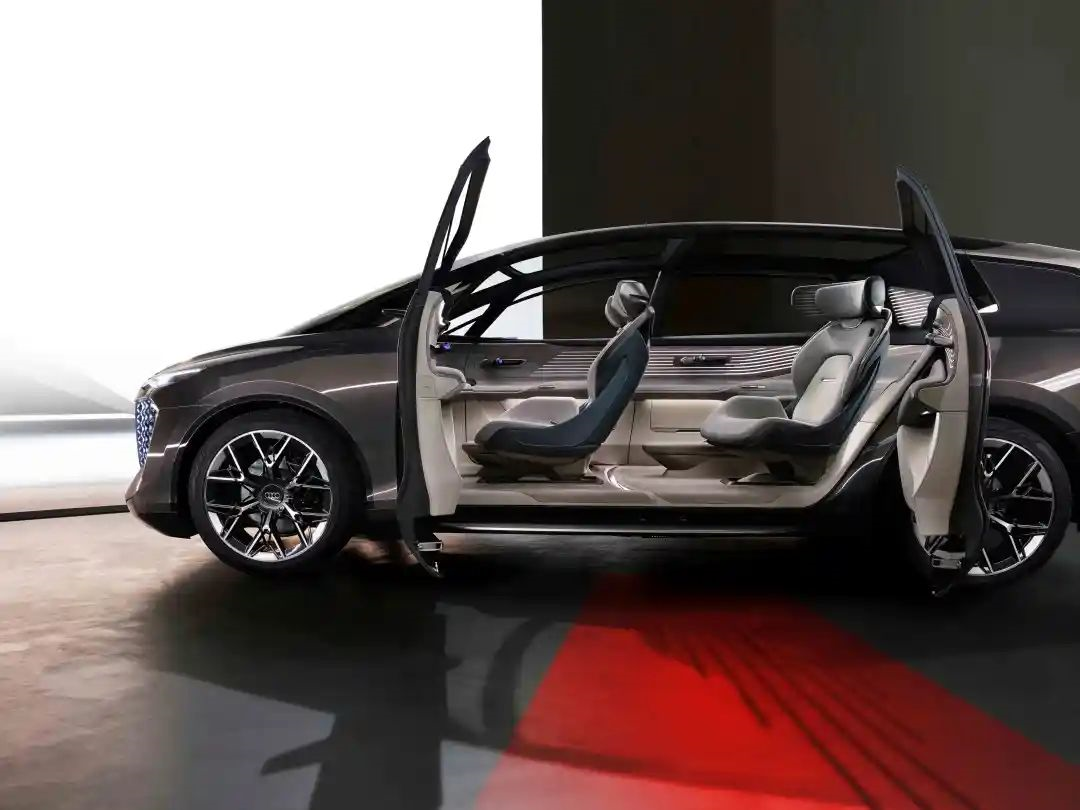 The Audi urbansphere concept car offers a diverse range of options for all passengers, providing a highly personalized and flexible experience: users can switch between communication, rest, and work at their leisure, enjoying their own private space. Therefore, the Audi urbansphere concept car has evolved from a strictly defined automobile into a “mobile experience terminal,” providing an unparalleled user experience.
The Audi urbansphere concept car offers a diverse range of options for all passengers, providing a highly personalized and flexible experience: users can switch between communication, rest, and work at their leisure, enjoying their own private space. Therefore, the Audi urbansphere concept car has evolved from a strictly defined automobile into a “mobile experience terminal,” providing an unparalleled user experience.
Interconnectivity
The screen has become an essential part of the automobile in this day and age. The Audi urbansphere comes equipped with four screens in total: a large, integrated infotainment screen located in the front of the cabin, two screens behind the front seats, and a transparent screen located on the roof.
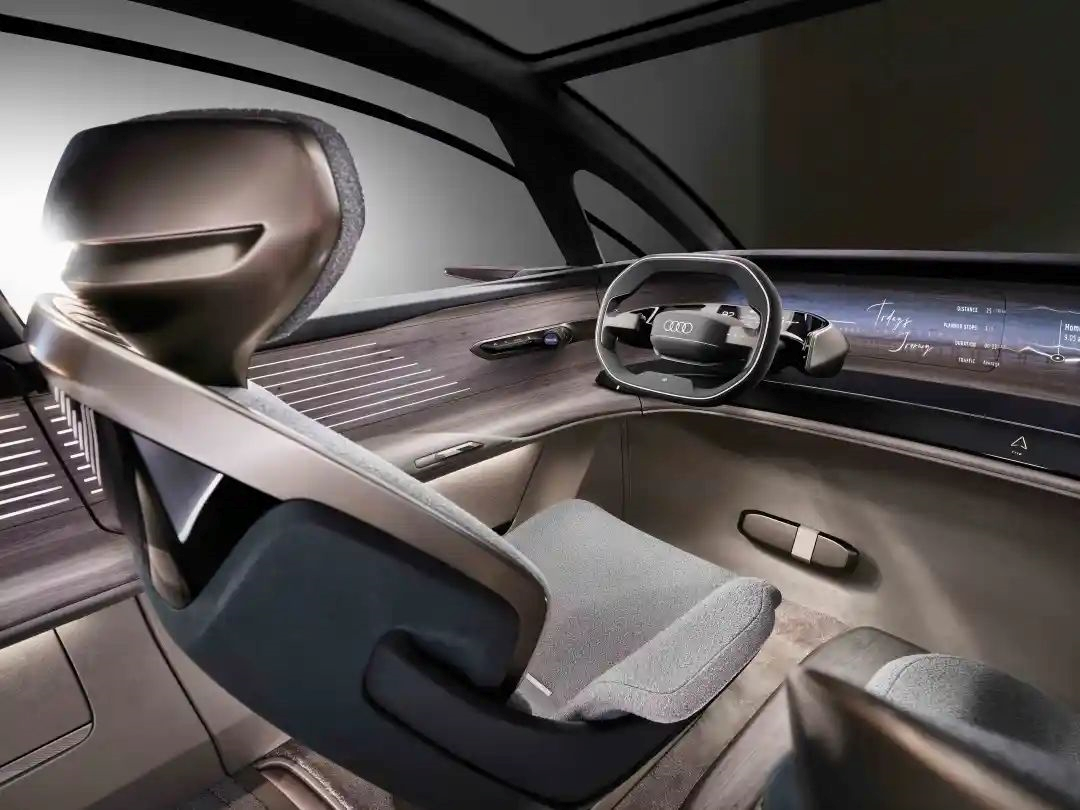
On the urbansphere, screen flexibility is the foundation for smart interconnectivity. In the promotional video, we noticed an interesting detail: the female lead walked towards the red carpet after she got out of the car, and this highlight moment was also captured by the camera, which was then transmitted directly to the car’s infotainment system.
This detail reflects one thing: whether it’s a car infotainment system or a mobile phone, they are actually a “platform” that displays the information you need. When the information between the car infotainment system and all your 3C electronic products is interconnected, many interesting things can happen. In addition to the scenes captured in the promotional video, the beautiful scenery recorded by your sports camera, drone, and other photography equipment can be transmitted to the car infotainment system in real-time, so you can share it with your friends on a larger and clearer interface.
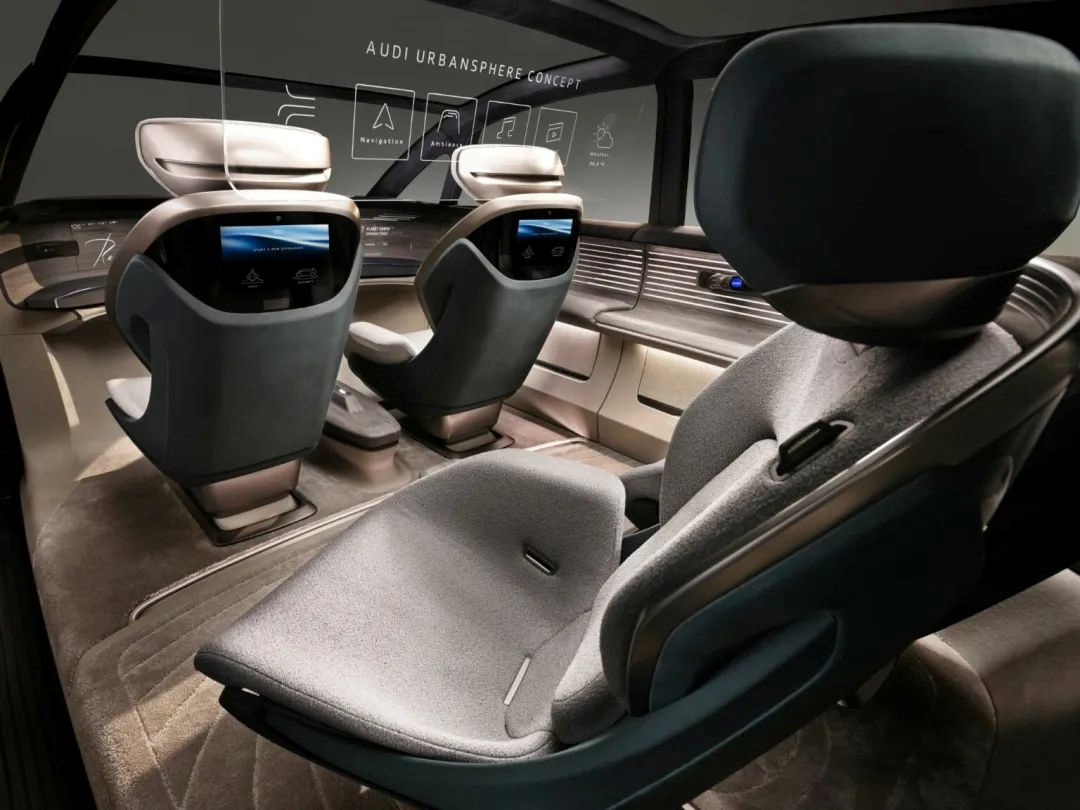
Furthermore, human-machine interconnectivity is also a trend. With innovative digital technology, the Audi urbansphere concept car can also become a mobile personal health space. Among the various functions, passenger stress monitoring is a very important aspect. Through facial recognition and voice analysis, the car can intelligently determine the passenger’s feelings and provide personalized relaxation suggestions, such as using the “meditation” application on an independent screen and personal sound system on the headrest to relax your body and mind and relieve stress.
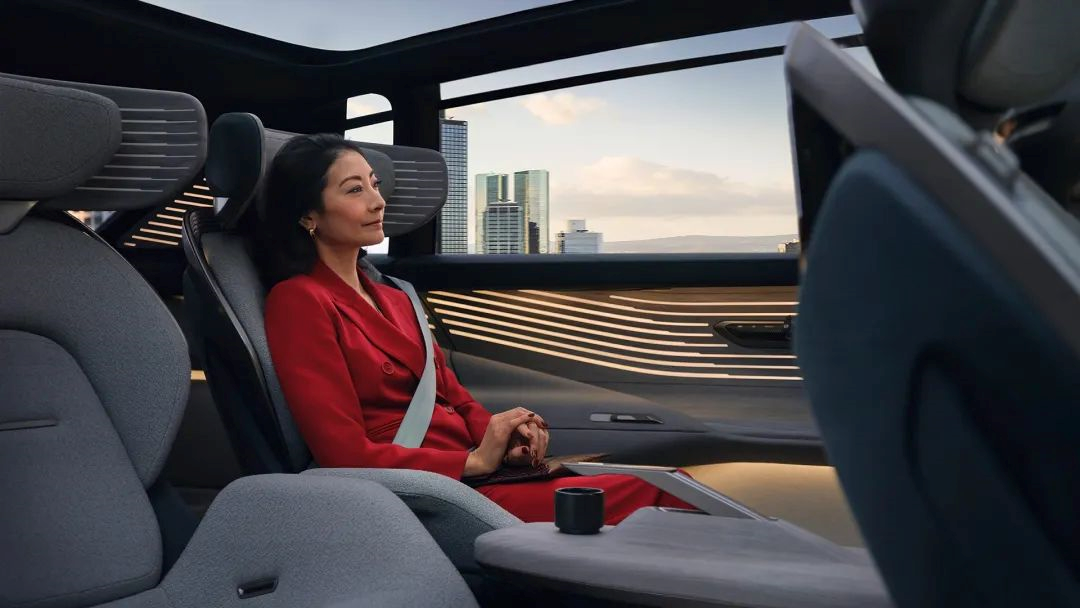 Previously, we discussed the topic of gesture interaction, and Audi engineers gave us a new use case. In the traditional door handle position of the car, designers have arranged an intelligent interaction unit where you can control the temperature and seat angle inside the car. This control unit can not only recognize voice and physical touch, but also sense your gestures. Why redundant? Because spacious space sometimes brings inconvenience. For example, if you place the seat in a semi-recumbent position, adjusting the seat angle requires getting up, but with gesture control, you can avoid such an awkward situation. We used to talk about luxury cars having “human care”, but this description seems empty until I saw this detail on the Audi urbansphere.
Previously, we discussed the topic of gesture interaction, and Audi engineers gave us a new use case. In the traditional door handle position of the car, designers have arranged an intelligent interaction unit where you can control the temperature and seat angle inside the car. This control unit can not only recognize voice and physical touch, but also sense your gestures. Why redundant? Because spacious space sometimes brings inconvenience. For example, if you place the seat in a semi-recumbent position, adjusting the seat angle requires getting up, but with gesture control, you can avoid such an awkward situation. We used to talk about luxury cars having “human care”, but this description seems empty until I saw this detail on the Audi urbansphere.
Third Space
In Audi’s official interpretation of urbansphere, there is a sentence that says “The Audi urbansphere concept car has doors that open in both directions and eliminates the B-pillar. When passengers board the car, the entire interior space will open to the passengers. At the same time, the seat rotates outward, and a beam of light illuminates like a red carpet, full of emotional ritual sense.”
The interior design of Audi urbansphere is full of this sense of ritual, such as large area ambient lighting, soft beige and gray tones, deep green seat shells, and so on. What is the purpose of arranging these things? I think it is more to enhance user immersion.
My colleague once told me that now driving a car without ambient lights feels a bit uncomfortable. They always feel that the cockpit is empty and lacking something. Previously, I always thought that ambient lights were a low-demand configuration that could be there or not, but his words made me rethink this issue.
Humans need a sense of atmosphere. The simplest example is that those friends who still work from home must have deep feelings. The efficiency of working from home must be lower than that of working in the office or coffee shop. Many freelancers like to work in coffee shops because there are relatively comfortable environments, white noise, and people who work like them. Although everyone seems to be an island, they are also mutually affected. Can you slack off while someone is busy writing beside you?
Many reasons are the same. Movies that can be watched on mobile phones have to be watched in theaters, and werewolf games that can be played on mobile phones have to be played in board game shops. These leisure places we often go to are called third spaces, and the real attraction lies in the sense of atmosphere. So in urbansphere, we can also see how Audi explores what kind of atmosphere experience the future cockpit needs to give users.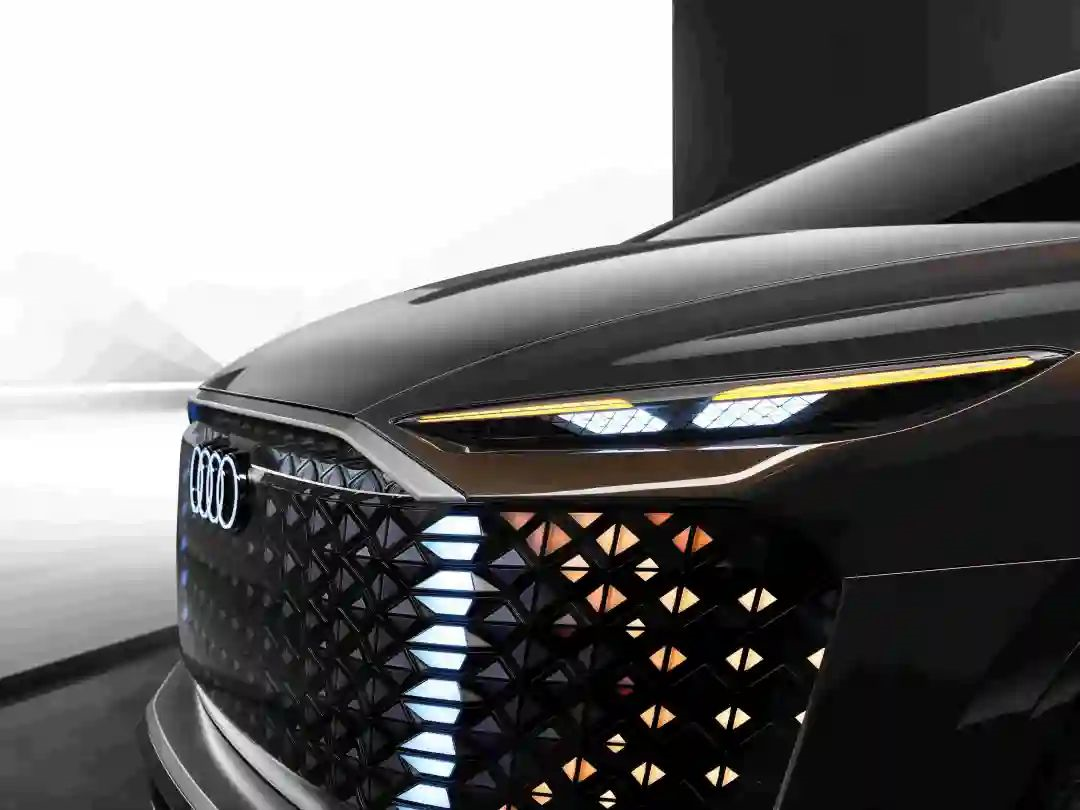
Whether you want to watch a movie on the car’s rooftop screen, video chat with friends, or attend a meeting, this urbansphere might give you a fantastic immersive experience.
Final Thoughts
Looking back at the three concept cars that Audi has released in the past year, it is evident that Audi has been constantly thinking about what the future of cars should be like. They are not developing cars in isolation, even collaborating with users to imagine and brainstorm about the future.
Traditionally, such collaboration may not be expected of luxury car brands, as they tend to rely on cash cows fueled by traditional fossil fuels. However, Audi is boldly embracing the next era of the automotive industry by striving for self-reform.
This article is a translation by ChatGPT of a Chinese report from 42HOW. If you have any questions about it, please email bd@42how.com.
